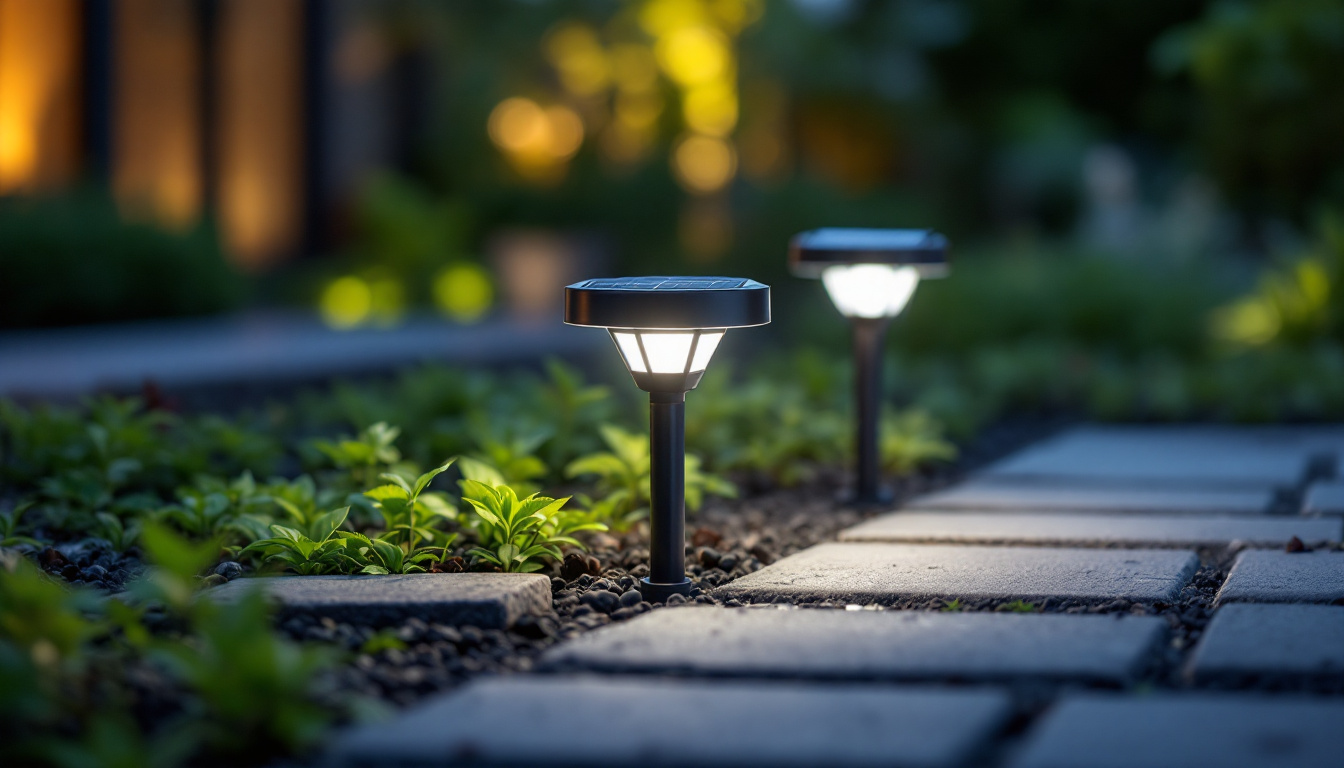

Lighting is a critical component of any construction or renovation project. It not only enhances the aesthetic appeal of a space but also plays a vital role in safety and functionality. For lighting contractors, understanding the nuances of lighting design is essential to avoid costly mistakes that can arise from poor planning.
proper lighting design involves more than just choosing the right fixtures; it requires a comprehensive understanding of the environment, the purpose of the space, and the needs of the end-users. This article will delve into the common pitfalls in lighting projects and how to avoid them, ensuring a successful outcome for both contractors and clients.
Before embarking on any lighting project, a thorough assessment of the environment is paramount. Factors such as natural light availability, ceiling height, and the color of walls can significantly impact lighting choices. For instance, a room with large windows may require different lighting solutions compared to a space with minimal natural light.
Moreover, understanding the intended use of the space is crucial. A well-lit workspace can enhance productivity, while a cozy atmosphere is essential for residential settings. Contractors must take the time to evaluate these aspects to create a tailored lighting plan that meets the specific needs of each project. Additionally, seasonal changes can affect natural light, so considering how the space will be utilized throughout the year is important. For example, a sun-drenched room in summer may need more subdued lighting options in winter to maintain a balanced ambiance.
With a clear understanding of the environment, the next step is selecting appropriate lighting fixtures. This decision should be based on both functionality and aesthetics. For example, recessed lighting may be ideal for low ceilings, while pendant lights can add character to higher spaces.
It is also important to consider energy efficiency. LED fixtures, for instance, offer longevity and reduced energy consumption, making them a popular choice in modern lighting design. However, not all LEDs are created equal. Contractors should ensure that they source high-quality products that meet industry standards to avoid future issues. Furthermore, the color temperature of the lights can dramatically affect the mood of a space; warmer tones can create a welcoming environment, while cooler tones can enhance focus and alertness. Therefore, selecting the right color temperature in conjunction with the fixture style is essential for achieving the desired atmosphere.
Even the most experienced contractors can fall prey to common mistakes in lighting projects. Identifying these pitfalls can help in mitigating risks and ensuring a smooth execution of the project.
One of the most significant mistakes in lighting design is neglecting the concept of lighting layers. Effective lighting design typically involves three layers: ambient, task, and accent lighting. Ambient lighting provides overall illumination, task lighting focuses on specific areas for activities like reading or cooking, and accent lighting highlights architectural features or artwork.
Failing to incorporate these layers can result in a space that feels flat or uninviting. Contractors should aim for a balanced approach that enhances both functionality and aesthetics, ensuring that each layer serves its purpose effectively. For instance, in a kitchen, ambient lighting can come from ceiling fixtures, task lighting can be achieved through under-cabinet lights, and accent lighting can be used to showcase decorative elements like a stylish backsplash or unique cabinetry. This layered approach not only improves the usability of the space but also contributes to the overall design narrative, creating a harmonious environment that feels well thought out.
Color temperature is another critical factor that can dramatically affect the mood and functionality of a space. Measured in Kelvin (K), color temperature ranges from warm (below 3000K) to cool (above 5000K). Warm light creates a cozy atmosphere, while cool light is often associated with productivity and alertness.
Contractors must consider the desired ambiance of each space when selecting bulbs. For example, a warm light may be suitable for a restaurant or living room, while cooler tones may be more appropriate for an office environment. Ignoring this aspect can lead to dissatisfaction from clients and may require costly adjustments later on. Additionally, the color rendering index (CRI) of the light source should also be taken into account, as it affects how colors appear under different lighting conditions. A higher CRI means more accurate color representation, which is particularly important in spaces like art studios or retail environments where color fidelity is crucial. By paying attention to both color temperature and CRI, contractors can create environments that not only look good but also feel right for their intended purposes.
Lighting technology is constantly evolving, and it is crucial for contractors to plan for future needs during the design phase. This foresight can prevent costly retrofits and ensure that the lighting system remains functional and relevant for years to come. As advancements in energy efficiency and design aesthetics continue to emerge, staying ahead of the curve can significantly impact the longevity and sustainability of a project.
smart lighting technology has gained popularity in both residential and commercial settings. Features such as dimming capabilities, color-changing options, and remote control access can enhance user experience and energy efficiency. Contractors should consider integrating smart technology into their lighting designs to meet the growing demand for modern solutions. The integration of sensors that adjust lighting based on occupancy or natural light levels can further optimize energy usage, making spaces not only more comfortable but also more environmentally friendly.
However, it is essential to ensure compatibility between the chosen fixtures and smart systems. Conducting thorough research and consulting with manufacturers can help avoid potential issues and provide clients with a seamless experience. Additionally, educating clients on the benefits of smart lighting, such as increased security through programmable settings and the convenience of mobile app controls, can enhance their overall satisfaction and engagement with the technology.
Designing a lighting system with flexibility in mind is crucial for accommodating future modifications. Spaces often evolve over time, and the lighting needs may change as a result. Contractors should consider using adjustable fixtures or installing dimmer switches to allow for easy adjustments. This adaptability not only caters to changing aesthetic preferences but also supports various activities within the same space, from hosting gatherings to creating a cozy atmosphere for relaxation.
Additionally, planning for additional circuits or outlets can provide the necessary infrastructure for future upgrades. This proactive approach not only saves time and money but also enhances the overall value of the project. Furthermore, incorporating modular lighting solutions can facilitate easy reconfiguration, allowing clients to adapt their lighting setups without extensive renovations. By anticipating these future needs, contractors can position themselves as forward-thinking professionals, ready to meet the dynamic demands of their clients and the market at large.
Compliance with local building codes and regulations is a non-negotiable aspect of any lighting project. Failure to adhere to these standards can lead to costly fines and project delays. Contractors must stay informed about the latest regulations and ensure that their designs meet all requirements.
Energy efficiency standards play a significant role in modern lighting design. Many regions have implemented regulations that mandate specific energy-saving measures. Contractors should familiarize themselves with these standards and incorporate energy-efficient solutions into their projects.
Utilizing LED technology, installing occupancy sensors, and implementing daylight harvesting techniques are just a few ways to enhance energy efficiency while remaining compliant. By prioritizing these measures, contractors can not only avoid penalties but also provide clients with cost-saving benefits in the long run.
Before finalizing any lighting installation, conducting thorough inspections is essential. This step ensures that all components are functioning correctly and meet safety standards. Contractors should take the time to test each fixture, check for proper installation, and verify that all wiring is secure.
In addition to ensuring compliance, inspections can help identify any potential issues before the project is completed. Addressing these concerns early on can save time and money, ultimately leading to a more successful project outcome.
Clear communication with clients is vital throughout the lighting project. Establishing a strong rapport can help manage expectations and ensure that the final outcome aligns with the client’s vision.
From the outset, contractors should set realistic expectations regarding timelines, budgets, and design possibilities. Transparency about potential challenges and limitations can help prevent misunderstandings and dissatisfaction later on.
Regular updates throughout the project can also foster trust and keep clients informed about progress. This open line of communication can lead to a more collaborative process, ultimately resulting in a successful project that meets the client’s needs.
Encouraging client involvement in the design process can lead to a more personalized outcome. Contractors should invite clients to share their preferences, ideas, and any specific requirements they may have. This collaborative approach not only enhances the final product but also strengthens the client-contractor relationship.
Additionally, providing clients with options and allowing them to make decisions about fixtures, color temperatures, and lighting layers can create a sense of ownership in the project. This involvement can lead to greater satisfaction and fewer revisions down the line.
Lighting projects can be complex and challenging, but with careful planning and attention to detail, contractors can avoid costly mistakes. By understanding the importance of proper lighting design, assessing the environment, and incorporating flexibility and compliance into their plans, contractors can set themselves up for success.
Effective communication with clients and encouraging their involvement throughout the process can further enhance project outcomes. By prioritizing these elements, lighting contractors can deliver exceptional results that meet both their clients’ needs and industry standards.
In the ever-evolving world of lighting, staying informed about trends, technologies, and regulations is essential. By continuously improving skills and knowledge, contractors can ensure they remain competitive and successful in their lighting projects.
Ready to elevate your lighting projects and avoid costly mistakes? Choose LumenWholesale for an unparalleled selection of spec-grade lighting products at wholesale prices. Our commitment to quality and affordability ensures that you have access to the best lighting solutions without the burden of inflated markups. With free shipping on bulk orders, you can trust that you’re getting the most value for your investment. Don’t compromise on performance or price. Visit LumenWholesale today and discover the ideal blend of quality, affordability, and convenience for all your lighting needs.

Discover the essential guide to optimizing warehouse lighting with our comprehensive layout calculator.

Discover why purchasing stadium lights in bulk from local distributors might not be the best choice.

Discover the pitfalls lighting contractors often face with high bay lighting installations.

Discover why purchasing architectural cylinder lights in bulk from local distributors might not be the best choice.
Get notified when NEW deals are released.
Optimize your budget with wholesale discounts.
Only top-quality, specification-grade lighting products.
No additional costs at checkout - what you see is what you pay.
We understand the unique needs of contractors.